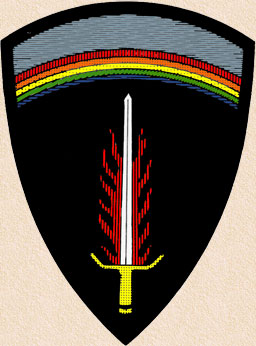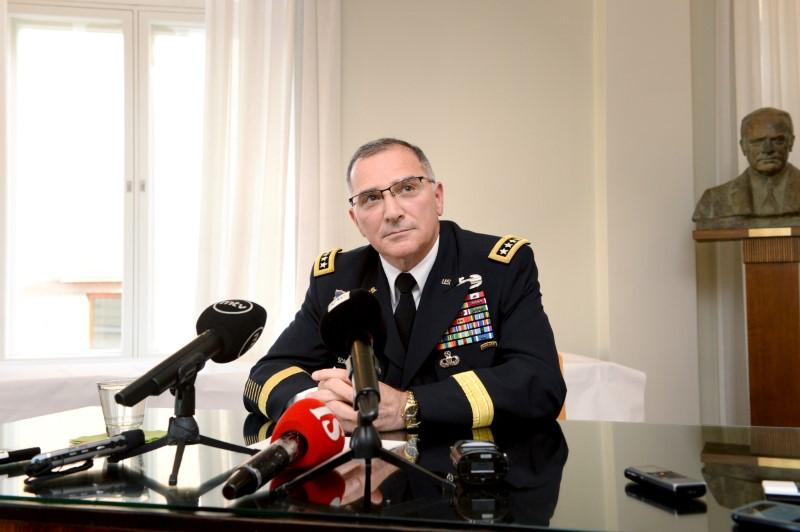
The Goldwater-Nichols Act of 1986, together with a powerful Chairman of the Joint Chiefs of Staff, Army Gen. forces in Europe grew to more than 350,000.

In the 1980s, the armed forces began to recover from the Vietnam War and U.S. intermediate-range Pershing II missiles and ground-launched cruise missiles to counter the Soviet threat. NATO responded with a two-track decision to step up negotiations while deploying U.S. In the late 1970s the Soviet Union deployed SS-20 intermediate-range ballistic missiles into Eastern Europe and in 1979 invaded Afghanistan.

facilities and personnel with bombings, kidnappings and assassinations including the kidnapping and killing of Israeli athletes during the 1972 Munich Olympic Games. European Command Headquarters, 1970sĭuring the 1970s, force protection concerns in Europe grew as terrorist groups targeted U.S. It remained there for two years until permanent facilities were available. In 1952, the headquarters operated temporarily in I.G. Naval Forces, Eastern Atlantic and Mediterranean, under the new headquarters, the United States European Command aka USEUCOM. Army European Command (redesignated as U.S. 2 of the same date combined the three European commands- U.S. 1 established the new unified command on August 1, 1952, and General Order No. This continues to be essentially the same leadership structure today. In 1952, he delegated authority for the direction and control of USEUCOM Headquarters to his deputy, General Thomas T. Ridgway declared his willingness to handle the dual responsibility as the Commander in Chief of United States European Command (USCINCEUR). Ridgway became the SACEUR on May 30, 1952. Eisenhower’s return to the United States, Army Gen. Handy as his deputy and directed him to establish the “new” unified command.

Ridgway On May 23, 1952, the Joint Staff approved General Eisenhower’s concept. forces in Europe and establish a separate staff under a deputy to conduct joint U.S. However, on May 19, 1952, he informed the Joint Chiefs of Staff that he would assume direct command of U.S. forces in the European theater and Supreme Allied Commander Europe (SACEUR) of the North Atlantic Treaty Organization. He was reluctant to hold the dual responsibilities of commander of all U.S. However, the United States did not fully develop the unified command structure in Europe until August 1, 1952, six years after USEUCOM was established. Truman approved the Outline Command Plan, the first Unified Command Plan for U.S. Since then USEUCOM has deployed forces to support more than 95 contingency, NEO, and humanitarian operations and continues to build upon its proud heritage and achievements. During the Cold War years, USEUCOM focused on preserving peace in Europe. Its past is just as varied as its present. He also was director for Russia on the Joint Staff in a previous posting.Since 1952, USEUCOM has participated in or provided support to more than 200 named operations varying from humanitarian and natural disaster relief efforts to peacekeeping and anti-terrorism/force protection operations across Europe. There are now more than 100,000 US troops in Europe, the highest number in nearly two decades.Ĭavoli, a Russian speaker and foreign-area officer by training, was born to an Army family in Würzburg, Germany, during the Cold War and grew up at various military bases throughout Europe.Ī graduate of Princeton University, he served multiple tours in Afghanistan. The number of US forces has continued to increase since Russia’s attack on Ukraine. Numerous US Army units have taken up positions in Europe in recent years, marking a reversal of the steady downward trend in troops on the continent that happened during a decade-long, post-Cold War drawdown.

Cavoli would be instrumental in any future changes to the military’s force design in Europe as NATO’s top military commander and leader of US European Command, which is based in Stuttgart, Germany, “Stars and Stripes” writes. The change comes at a critical time for NATO and overall security in Europe because of Russia’s war in Ukraine, which is expected to have long-term implications for US military missions on the continent. If confirmed he will replace US Air Force General Tod Wolters. According to the magazine “Stars and Stripes”, General Christopher Cavoli has been nominated by President Joe Biden to serve as NATO’s next Supreme Allied Commander Europe, a two-pronged job that also involves command of American troops in Europe.


 0 kommentar(er)
0 kommentar(er)
